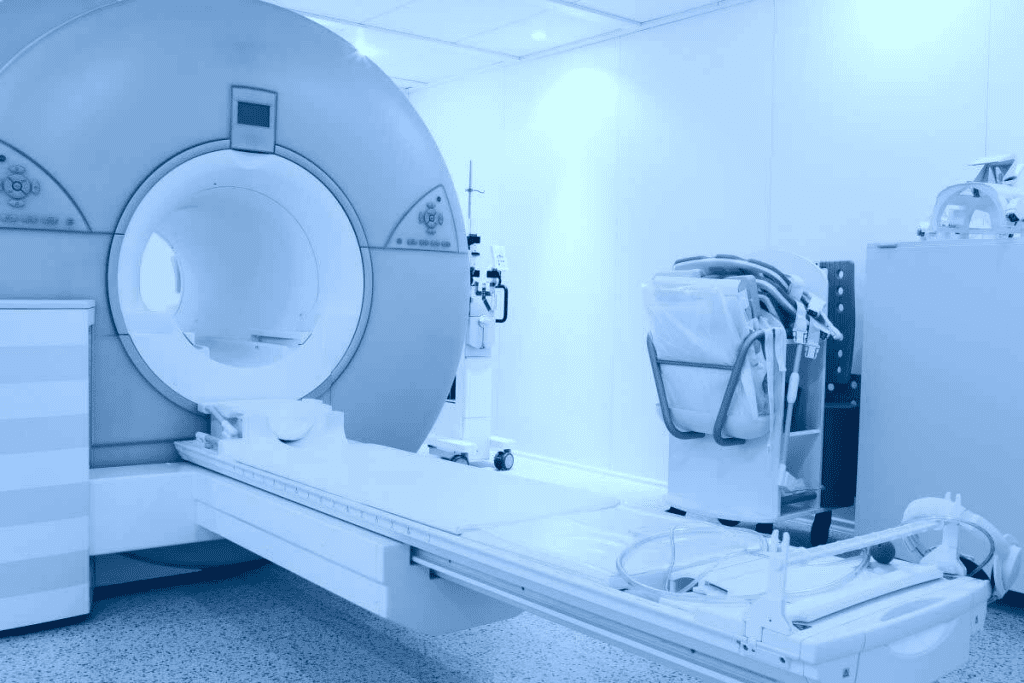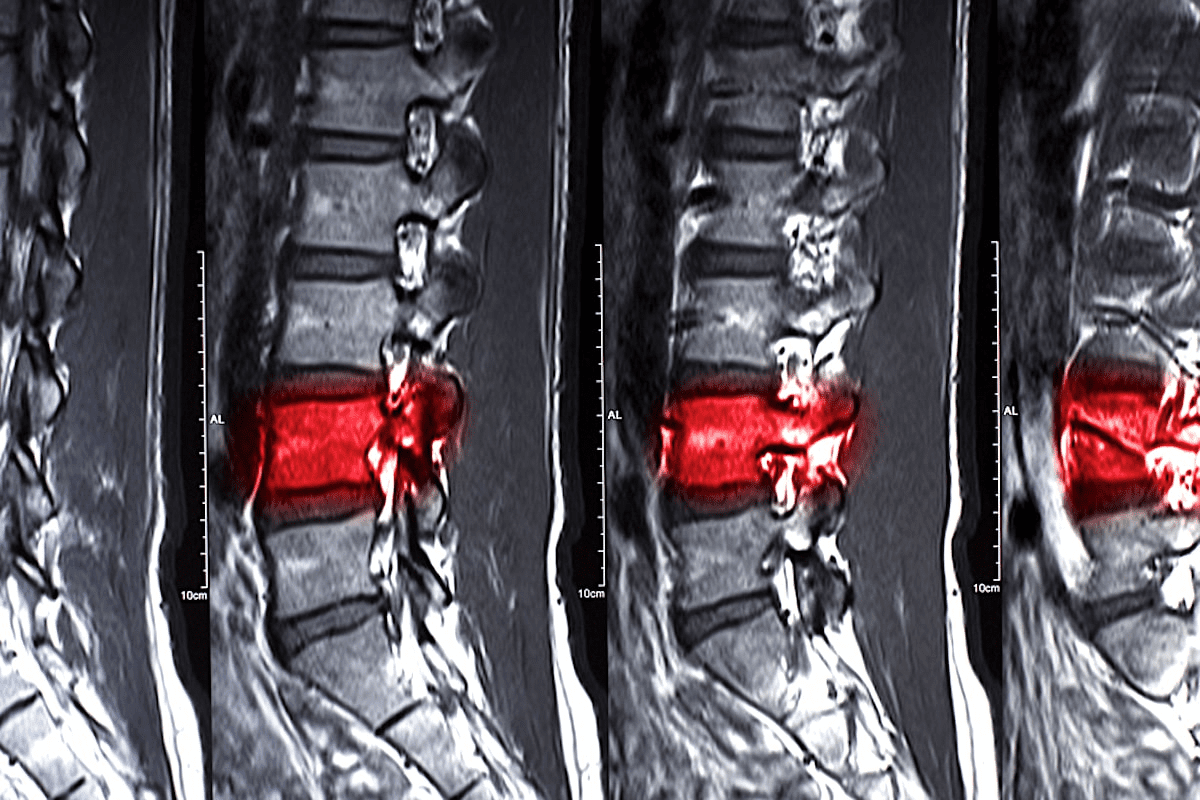Last Updated on November 27, 2025 by Bilal Hasdemir

At Liv Hospital, we know how vital accurate diagnosis is for finding colon cancer and dangerous polyps. We use advanced imaging like PET scans. But, how reliable are these scans in this critical task?
PET scans are very good at spotting metastatic colon cancer. They have a high sensitivity of about 90% and specificity of around 85%. This makes them a key tool in our diagnostic tools.
We will look into how accurate PET scans are for finding colon cancer and polyps. We’ll talk about their sensitivity and specificity. And how they fit into our diagnostic process. Does a pet scan show colon cancer: Accuracy of PET scans in detecting colon cancer and polyps.
Key Takeaways
- PET scans have high sensitivity and specificity for detecting metastatic colon cancer.
- Advanced imaging techniques like PET scans are key for accurate diagnosis.
- Liv Hospital uses PET scans as part of our detailed diagnostic care.
- PET scans can be more effective than traditional CT scans in finding cancer spread.
- Knowing the accuracy of PET scans is key for planning treatment.
Understanding PET Scans in Cancer Detection

Learning about PET scans is key to seeing their role in cancer care. PET scans, or Positron Emission Tomography scans, are advanced tools for cancer detection and treatment planning.
What is a PET Scan and How Does It Work?
A PET scan is an imaging test that uses a radioactive sugar molecule to spot cancer. Cancer cells use more sugar than normal cells, making them visible on a PET scan. This helps find areas with high activity, which often means cancer.
To do this, a small amount of radioactive tracer is injected into the body. It goes to areas with high activity, like growing cancer cells. The PET scan machine picks up these signals, creating detailed images of the body’s activity.
The Science Behind Metabolic Imaging
Metabolic imaging, used by PET scans, shows how cancer cells are different from normal cells. It highlights these differences to spot cancerous tissues. This is great for diagnosing and staging cancer, and for checking how well treatments are working.
The most used tracer is FDG (Fluorodeoxyglucose), a sugar molecule with a radioactive atom. Cancer cells take in FDG, letting the PET scan find areas with high activity.
Types of PET Scans Used in Colorectal Cancer
In colorectal cancer, PET scans are mainly for staging and seeing if the cancer has spread. They check if cancer has gone to other places like the liver or lymph nodes. The American Cancer Society says PET scans are key in the diagnostic process, helping make treatment plans.
Even though PET scans aren’t first used for diagnosing colorectal cancer, they’re vital for understanding the disease’s extent. They help plan the best treatment strategies.
Does a PET Scan Show Colon Cancer? Accuracy Rates Explained

Knowing how well PET scans find colon cancer is key for making smart choices about treatment. PET scans are a big help in finding and managing colon cancer. But, how well they work depends on a few things.
Sensitivity and Specificity Statistics
PET scans are pretty good at spotting metastatic colon cancer. They’re right about 90% of the time when it comes to finding cancer. They’re also right about 85% of the time when they say there’s no cancer.
But, these numbers can change. This depends on the cancer’s stage, where the tumor is, and the PET scan technology used.
Factors That Influence Detection Accuracy
Several things can affect how well PET scans find colon cancer. These include:
- The size and location of the tumor
- The type of PET scan technology used
- The stage of cancer
- Patient preparation and fasting status
- The presence of other medical conditions, such as diabetes or inflammation
Knowing these factors helps doctors understand PET scan results better. This is important for making good decisions about patient care.
Interpreting PET Scan Results for Colorectal Cancer
Reading PET scan results for colorectal cancer needs a lot of knowledge. Doctors look at the standardized uptake value (SUV) to see how active the tumor is. A higher SUV usually means the tumor is more active.
But, it’s important to look at the whole picture. Doctors need to consider the patient’s medical history and other tests too.
By using PET scans with other tests and medical info, doctors can get a clearer picture. This helps them plan better treatments for patients.
PET Scans vs. CT Scans for Colon Cancer Detection
PET scans and CT scans are used to find colon cancer. They work in different ways. Knowing their strengths and weaknesses helps doctors choose the best test for each patient.
Comparative Accuracy Statistics
PET scans are more accurate than CT scans in finding colon cancer spread. PET scans can spot cancer with about 93% accuracy. CT scans are less accurate, with about 56% accuracy.
Strengths of Each Imaging Modality
PET scans are great at finding cancer cells because they show metabolic changes. They’re best for finding cancer that has spread far away. CT scans, on the other hand, show detailed pictures of the body. They’re good for seeing how big a tumor is and finding big cancer spots. CT scans are also cheaper and easier to get than PET scans.
PET scans are better at finding cancer, but they don’t show the colon’s details as well as CT scans or colonoscopy. So, the choice between PET and CT scans depends on what the doctor needs to know.
When Each Scan Type is Most Appropriate
PET scans are best for checking if cancer has spread or for seeing how well treatment is working. They’re key in staging colon cancer and watching for it to come back. CT scans are used for the first look at cancer, to see how big a tumor is, and to guide biopsies. CT scans are also used to keep an eye on patients who have had colon cancer before.
In short, both PET scans and CT scans are important in fighting colon cancer. The right choice depends on the patient’s situation, what the doctor needs to know, and the patient’s health.
Detecting Metastatic Colon Cancer with PET Scans
PET scans are key in finding metastatic colon cancer. They give us important info for planning treatment. We use them to see how far the cancer has spread. This helps us choose the best treatment.
Accuracy in Identifying Distant Metastases
PET scans are very good at finding cancer in distant parts of the body. They are accurate in spotting cancer in the liver, lungs, and lymph nodes. This is important for planning treatment.
PET scan accuracy helps us decide if a patient needs special treatments or surgery. They help us make treatment plans that fit each patient’s needs.
Liver, Lung, and Lymph Node Metastasis Detection
PET scans are great at finding cancer in the liver, lungs, and lymph nodes. For example, they can spot liver cancer that other tests miss. This helps us make better treatment choices.
- PET scans can find liver cancer with high accuracy, helping us decide if surgery is possible.
- They are also good at finding lung cancer, which is important for planning treatment.
- PET scans help us see if cancer has spread to lymph nodes, which is key for treatment planning.
Impact on Staging and Treatment Planning
PET scans greatly affect how we stage colon cancer and plan treatment. Knowing the exact stage of cancer is vital. It helps us predict how well a patient will do and choose the right treatment.
PET scans help us see if cancer has spread to other parts of the body. This can change how we treat the cancer. For instance, finding new cancer spots might mean we switch to treatment that focuses on comfort.
We count on PET scans to help us plan the best treatment for each patient. This ensures they get the care they need based on their cancer’s spread.
Limitations of PET Scans in Early-Stage Colon Cancer
PET scans are great for finding and checking cancer, but they have limits when it comes to early colon cancer. They work well for many cancers, but early colon cancer is different. Several factors make it hard for PET scans to get it right.
Size Thresholds for Reliable Detection
PET scans can’t find small tumors well. The size and how active the tumor is play big roles. Tumors under 1 cm are tough to spot because of the scan’s limits and how it sees tumors.
Lesions need to be 5-8 mm to be seen clearly. Even then, how active the tumor is matters. More active tumors are easier to spot.
Challenges with Mucinous Adenocarcinomas
Mucinous adenocarcinomas are a special challenge for PET scans. These tumors don’t take up glucose as much as others. This makes them harder to find.
Research shows these tumors can lead to false negatives on PET scans. This can cause delays in finding and treating the cancer. The low glucose uptake makes them less visible.
Understanding False Negatives in Early Disease
False negatives happen when a PET scan misses cancer. In early colon cancer, this can be very bad. It can lead to late diagnosis and wrong treatment plans.
| Factors Contributing to False Negatives | Description | Impact on Detection |
|---|---|---|
| Tumor Size | Smaller tumors are harder to detect | Reduced sensitivity for early-stage cancer |
| Tumor Type | Mucinous adenocarcinomas have lower metabolic activity | Increased likelihood of false negatives |
| Glucose Metabolism | Tumors with low glucose uptake are less visible | Decreased detection rate for certain tumor types |
Knowing these limits helps us understand PET scan results better. It helps us make better choices about more tests and treatment.
Can PET Scans Detect Colon Polyps?
PET scans are great for finding cancer, but they’re not always good at spotting colon polyps. These are growths on the colon or rectum and can turn into cancer. Whether a PET scan can find a polyp depends on its size and how active it is.
Detection Rates for Precancerous Lesions
Research shows PET/CT scans can spot big problems, but not always. They can find lesions over 10 mm in size, but not always. How well they work depends on the scanner, the tracer used, and the polyp itself.
Polyps that are very active show up better on PET scans. But, many polyps are small or not very active. This makes them hard to find with PET scans alone.
Size Thresholds for Polyp Visibility
The size of a polyp matters a lot for PET scans. Bigger polyps are easier to see. Studies say polyps over 10 mm are more likely to be found.
| Polyp Size (mm) | Detection Rate (%) |
|---|---|
| 10-20 | |
| 5-10 | 20-40 |
| > 10 | 50-72 |
Why Most Polyps Remain Undetected on PET
Most colon polyps are missed by PET scans because they’re small or not very active. PET scans can’t see small details well. This makes it hard to spot small lesions.
Some polyps, like those with mucinous components, are harder to see on PET scans. This is because they don’t show up much on the scan.
In short, PET scans can find some colon polyps, but not all. They work best for big, active polyps. For finding and removing most polyps, colonoscopy is the best choice.
Why PET Scans Cannot Replace Colonoscopy
PET scans have improved a lot, but colonoscopy is the top choice for finding colon cancer. This is because each tool is better at finding different things. Colonoscopy is great at spotting small polyps and early cancer.
Comparative Detection Capabilities
PET scans and colonoscopy work in different ways to find colon cancer and polyps. PET scans are better at finding big tumors and cancer that has spread. But, colonoscopy is better at finding small polyps and cancer in its early stages.
Colonoscopy can see the inside of the colon directly. This lets it find small polyps and early cancer. PET scans, on the other hand, look for changes in how cells use energy. This method might miss small changes in early cancer or small polyps.
| Diagnostic Tool | Sensitivity for Polyps | Sensitivity for Early Cancer |
|---|---|---|
| PET Scan | Low | Moderate |
| Colonoscopy | High | High |
The Gold Standard for Polyp and Early Cancer Detection
Colonoscopy is the best way to find polyps and early colon cancer. It lets doctors see and remove any suspicious areas. This makes it key for both finding and preventing cancer.
Colonoscopy can find and remove polyps before they turn into cancer. This can stop colon cancer from happening. So, colonoscopy is very important for preventing colon cancer.
Complementary Roles in Colorectal Cancer Management
PET scans can’t replace colonoscopy for regular checks, but they help in managing colon cancer. They are good for checking how far cancer has spread and how well treatment is working.
In short, even though PET scans are useful, colonoscopy is the best for finding polyps and early cancer. Using both tools together helps manage colon cancer better.
Clinical Applications of PET/CT in Colorectal Cancer Management
PET/CT is a key tool in managing colorectal cancer. It helps us understand how the disease progresses and how well treatments work. We use it at every stage, from finding the cancer to checking how it’s doing after treatment.
This technology combines PET’s metabolic info with CT’s body details. This gives us a full picture of the cancer.
Staging Newly Diagnosed Colon Cancer
Knowing how far the cancer has spread is key to planning treatment. PET/CT is important in staging colon cancer. It helps find the main tumor, check lymph nodes, and spot distant metastases.
This info is essential for choosing the right treatment. It could mean changing the initial plan to better match the patient’s needs.
Monitoring Treatment Response
It’s vital to see how well treatments are working. PET/CT checks tumor activity before, during, and after treatment. This shows if the treatment is effective early on.
It helps us tell who’s responding well and who’s not. This leads to more tailored treatment plans.
Surveillance for Cancer Recurrence
Keeping an eye out for cancer coming back is important. PET/CT is great for finding recurrence. It spots changes in the tumor before they show up on other scans.
Finding cancer early can greatly improve treatment chances. It can lead to more effective treatments or better care for those who can’t be cured.
Conclusion: The Appropriate Role of PET Scans in Colon Cancer Care
We’ve looked into how PET scans help find colon cancer and manage its treatment. They are key in spotting cancer that has spread and in checking how well treatments work. Knowing how accurate PET scans are is key to using them right in colon cancer care.
PET scans are good at finding cancer that has spread far away. This helps doctors plan the best treatment. But, they’re not as good at finding cancer in its early stages or small polyps. They work best with other tests like colonoscopy and CT scans.
In short, PET scans are very important in colon cancer care. They help find cancer that has spread and see how treatments are doing. By knowing what PET scans can and can’t do, doctors can use them wisely in treating colon cancer.
PET scans help make colon cancer care better by giving important information. Using PET scans well can lead to better diagnosis and treatment. This means better care for patients with colon cancer.
FAQ
Can a PET scan detect colon cancer?
Yes, PET scans can find colon cancer. But, how well they work depends on the cancer’s stage and the PET scan type.
How accurate is a PET scan for detecting colon cancer?
PET scans’ accuracy in finding colon cancer varies. This depends on the study and the people involved.
Can PET scans detect colon polyps?
PET scans can’t easily spot colon polyps, mainly the small ones. This is because polyps don’t show much activity.
Can a PET scan replace colonoscopy?
No, PET scans can’t take the place of colonoscopy. Colonoscopy is the best way to find polyps and early colon cancer.
What is the role of PET scans in detecting metastatic colon cancer?
PET scans are key in finding metastatic colon cancer. They help spot cancer spread in the liver, lungs, and lymph nodes.
How do PET scans compare to CT scans in colon cancer detection?
PET scans and CT scans work differently in finding colon cancer. PET scans are better at showing activity, while CT scans give more detail about the body’s structure.
Can a PET scan show colon cancer recurrence?
Yes, PET scans can help watch for colon cancer coming back. This is true for patients who have had treatment.
What are the limitations of PET scans in early-stage colon cancer detection?
PET scans have limits in finding early colon cancer. They might miss small tumors and struggle with certain types, like mucinous adenocarcinomas.
Can a CT scan detect colon cancer?
Yes, CT scans can find colon cancer. But, they might not catch all types of tumors or cancer spread as well as PET scans.
How is PET/CT used in colorectal cancer management?
PET/CT is used in many ways in managing colorectal cancer. It helps with staging, checking how well treatment works, and watching for cancer to come back.
Reference
- Tahir, A., et al. (2024). Ensemble deep-learning model for fracture detection using radiological images. Computers in Biology and Medicine. https://www.sciencedirect.com/science/article/pii/S0009926024004197






